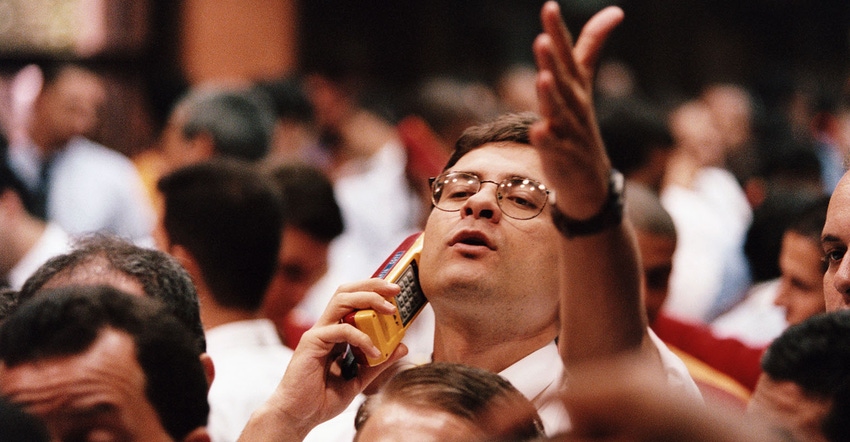Spot prices for most Prime commodity-grade resins slid a cent, erasing previous week’s gain.
April 5, 2023

Spot resin trading activity continued to improve as the first quarter of the year came to a close. It was busy enough not only to salvage March, but to turn it into the best month so far of 2023, reports the PlasticsExchange in its Market Update. A flurry of discounted polyethylene (PE) and polypropylene (PP) month-end deals were greeted with solid demand from buyers that had been cooling their heels waiting for good opportunities.
Completed volumes were evenly split between domestic and export and also between PE and PP. Spot prices for most Prime commodity-grade resins slid a cent, essentially erasing the previous week's penny gain. Although there are several force majeures in place for both PE (four) and PP (two), the Chicago-based resin clearinghouse writes that it recently saw some better supplies develop in high-density (HD) PE resins, which had been hardest hit by these outages. Still, overall spot availability for most materials remained snug as the supply and demand dynamic regains some balance after more than a half-year of reduced resin production. The upward cost-push pricing pressure from feedstock monomer also eased toward the end of March, mostly in polymer-grade propylene (PGP).
The baseline of export sales remains elevated, though some incremental sales to Latin America have been challenged by competitive offers coming from Asia. Recent weakness in the US dollar coupled with rising oil prices could lend support to US exports, according to the PlasticsExchange, although there are also global economic headwinds, such as high inflation, rising interest rates, and bank failures.
Robust spot PE volumes
Spot PE volumes were robust in the final week of March, as ongoing force majeures sent buyers to the market to supplement supplies and producers sought to sell off some extra pellets as the quarter ended. Not all resin grades participated in the discounts and some low-ball buyers were left with unfilled demand. While resin trading activity the week of March 27 was among the strongest of the year, it was still well below historic trading averages at the PlasticsExchange, and it remained weak year-on-year for the quarter. Spot PE availability has been fairly tight, but demand has lacked the oomph to carry prices higher and most PE grades relinquished the penny gain garnered the previous week. Although spot HDPE resins gave back a net $0.01 to 0.02/lb this month, they have been the strongest of the PE grades so far in 2023, averaging a $0.06/lb increase.
Low-density (LD) PE and linear-low-density (LLD) PE grades also slid $0.02/lb in the spot market during March and remain up $0.02/lb for 2023. In its Market Update, the PlasticsExchange writes that based on its daily trading activities and spot prices, it felt that the March increase, which had relaxed to $0.03/lb, was not appropriate to implement. Others said that it would stick. Five producers have also nominated another nickel for April, but at the end of the month contracts were not completely settled. The PlasticsExchange still thinks they should be flat, holding on to the $0.03/lb January gain. The outstanding increase should be attempted again in April, it adds, in case conditions turn more bullish.
Exceptionally well-priced homo- and co-polymer PP
Spot PP trading was very good last week: Completed volumes were high and prices followed spot PGP lower. Although the flow of off-grade railcars was not particularly heavier than in weeks past, several groups of offers, both for homo- and co-polymer PP, were exceptionally priced and caught the attention of buyers who felt the deals were too good to pass up. Resellers had thinned their inventories as the fierce monomer rally finally busted, lending solid demand for Prime packaged PP resins.
While PP orders were already better during the second half of March, many buyers that resisted purchasing beyond bare minimums this year might start to replenish their inventories, as April contracts are already pointing lower based on falling monomer costs. In the meantime, March contracts are settling up $0.08/lb to bring this year’s total increase to $0.23/lb or so, considering an average $0.03/lb margin crunch during Q1. The PlasticsExchange feels that the actual margin compression was greater in the spot market, as its PP prices peaked in early March, up a total of $0.13/lb before eroding a nickel over the balance of the month. With spot PP already starting to recognize imminent April PGP-led cost relief, prices could soften further. They need not tumble from here, though, as they are a good value and are already discounted to anticipated April contract levels, according to the PlasticsExchange.
Read the full Market Update, including more news about PGP pricing and energy futures, on the PlasticsExchange website.
About the Author(s)
You May Also Like




